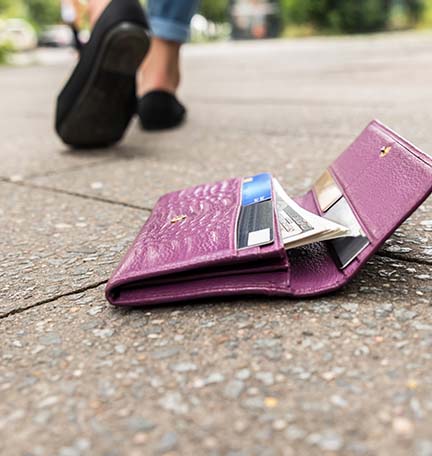Explore the benefits of cash back programs, which give you back a percentage of your purchase.
With so many rewards programs available these days, the advantages of cash back rewards don’t always get the attention they deserve. Like most card-based reward programs, cash back rewards grow as you spend and can be redeemed in a variety of ways. Common methods include awarding points that can be converted to cash or goods, used with a participating merchant, or applied to travel expenses, such as flights or hotels.
These days there’s more flexibility than ever in how you can accumulate and redeem cash back rewards. You can even earn cash back from your debit card by shopping at a preferred retailer. Here are answers to other common questions about cash back rewards.
How Do Cash Back Programs Work?
Your cash back rewards build up according to how much you spend, and the value of your rewards varies according to the terms of the program you’re in. You might earn a certain percentage of rewards on a purchase, usually up to a certain dollar amount per transaction or per year. You might earn more points for certain types of spending.
Alternatively, you could earn cash back with participating merchants by activating deals presented to you through your online banking portal or mobile banking app. Just be sure to check the expiration date on any offer.
What Should I Look for in a Cash Back Program?
Start by identifying the type of spender you are, as well as the type of rewards you want, so you can find the best fit from a given program, says Kristin Williams, Head of Loyalty & Rewards Programs for Regions Bank. “If you want to earn rewards for the purchases you make most often, consider a card with bonus rewards in certain categories—like dining, gas or groceries,” she says.
“And if you want to keep things simple—no games, categories or limits—a flat rate cash back card may be best.”
What Other Features Are Important to Consider?
Ease of use is a big factor to think about, Williams emphasizes. Ideally, the terms for earning and redeeming rewards should be clear. The rewards portal should be simple to navigate. It’s also helpful when you not only get alerts via email or text about new offers, but you can activate those offers seamlessly if you’re on the go, or on a partner’s website.
And speaking of partners: Another feature offered by some programs is the ability to increase your rewards if you’re a member of your bank’s loyalty program.
How Can I Make Sure the Cash Back Offers Are Relevant to Me?
In merchant-funded programs, the deals you’ll have access to are from businesses that have partnered with your bank. In some cases, the more frequently you use your card, the stronger your shopping profile will be, which may help the partner businesses provide you with more relevant offers and deals.
For example, if you often use your card to shop for clothing at one store, another retailer might offer cash back for purchases at its business. Don’t worry though; merchants receive aggregate information on your shopping patterns, but they shouldn’t receive any of your personal details.
How Much Can I Save Through Cash Back Programs?
There are two ways to think about savings, notes Williams. First, you can see actual cash savings that are a result of certain purchases giving you a percentage back in a dollar value. While the initial savings may only be a few dollars per purchase, over the course of a year you might see a substantial amount add up in your account.
The second way you can see savings is when you’re able to use the rewards to obtain other goods or services through different deals. For example, some rewards points have more value when redeemed for airfare or hotels than when redeemed for cash. It’s important to decide which type of savings matters more to you, or whether you’d like to take advantage of both types, as that can help determine the type of program you’ll find most rewarding.
What’s the Biggest Misconception About Cash Back Rewards?
People don’t always realize how many options they have with cash back programs, Williams says.
There was a time when “cash back” didn’t have the same cachet as miles and points, but that’s changed now. Rewards can be generous—and you can use cash back rewards for many of the same categories, like dining and travel, that used to be reserved for points and miles. (Small business owners can earn rewards, too.) Spend a little time getting to know the program and the rewards portal, so you can see the full range of possibilities.
What Are Some of the Limitations of a Cash Back Program?
Depending on the cash back program you're using, there may be a limit on the amount you can get back per year, or you may only earn cash back on certain items, or at certain merchants participating in the program. Also, if you forget to activate deals presented to you, you won’t receive the credit, and you’ll want to make sure you activate and use any deals before they expire. By reading and understanding the program terms, you'll be able to maximize your rewards.
Three Things to Do
- Explore which credit card rewards program might be right for you.
- See how many extra rewards you could earn with Rewards Multiplier.
- Earn cash back when you activate Regions Offers and shop with your debit, credit or Now Card.










